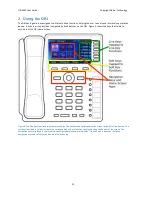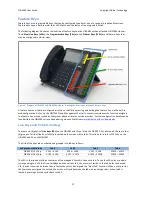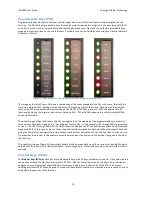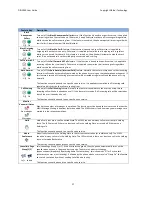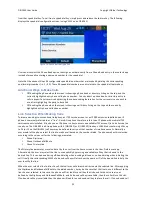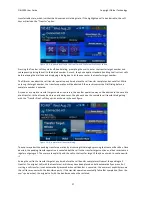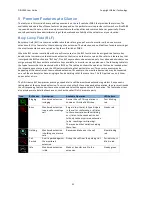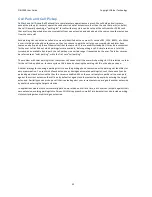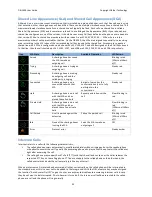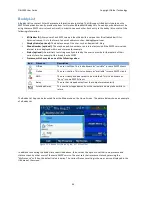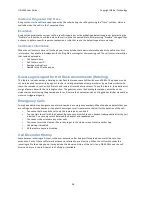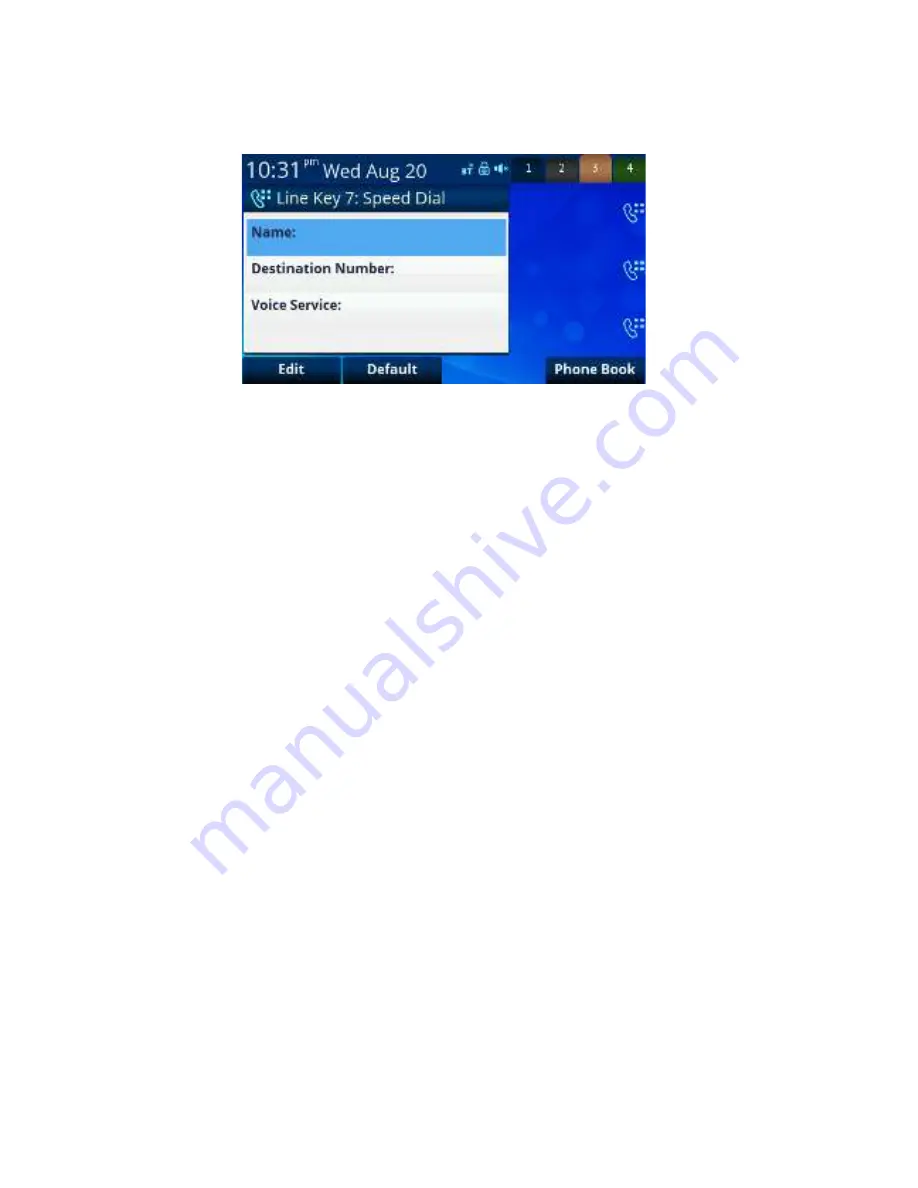
OBi1000 User Guide
Copyright Obihai Technology
23
from that speed dial key. To call from a speed dial key, simply press and release the feature key. The following
displays the speed dial configuration screen (using VLK23 on an OBi1062).
Figure 16: Speed dial configuration
User can also select the Phone Book option to assign a number directly from a Phone Book entry in the contacts app
instead of manually entering a name and number for the speed dial.
Note that the phone still has 99 configurable speed dial numbers that are invoked by dialing the corresponding
one/two-‐digit number (i.e. 1 – 99). These 99 speed dial numbers are not related to the speed dial feature keys.
Additional Ways to Make Calls
•
Off-‐hooking the phone when the screen is showing a phone book or directory listing on the top, and the
currently highlighted entry has a valid phone number. You can direct a phone book or directory entry to
call via a specific voice service by pressing the corresponding feature key for the voice service you wish to
use, after highlighting the party to be called.
•
Off-‐hooking the phone when the screen is showing a call history listing on the top and the currently
highlighted entry has a valid phone number
Line Selection When Making Calls
To draw an analogy to conventional telephony, an ITSP service account or an IP PBX extension installed on an IP
phone is commonly referred to as a "line". A multi-‐line phone therefore refers to an IP phone with multiple ITSP
service accounts installed. A line key on an IP phone is a key to access an available ITSP account (ie Voice Service) on
the phone. The OBi1000 is a 6-‐line phone, with 6 (OBi1062) or 3 (OBi1032) line keys. With 4 tabs containing VLKs, up
to 24 (or 12 on the OBi1032) call keys may be defined to carry out that number of simultaneous calls. Normally a
user would let the phone select the line to make a call based on the number dialed. The phone makes this selection
according to the values set for the following parameters:
•
Phone
Digitmap
•
Phone
OutboundCallRoute
•
Phone
PrimaryLine
The
PrimaryLine
parameter may also be set by the user from the home screen in the User Preferences app.
Alternatively, the user may select the line to use explicitly by pressing an available call key that is bound to the
desired line. This can be done during off-‐hook dialing when invoking dial tone or on-‐hook dialing when initiating the
call. Usually the corresponding VLKW of a bound call key will also show the name or ID of the bound line to help the
user identify the line.
When the user selects a line to direct a call, that call may not always be directed via the selected line. After applying
the
Digitmap
and
OutboundCallRoute
to the dialed number, it may be the case that the line to use is different to the
line the user selected. In this case, the phone will first look for a call key that is bound to the voice service, as
defined by the
Digitmap
and
OutboundCallRoute
, and if a bound call key is available, then the call will use this slot.
If no bound call key is available then the phone will look for an unbound call key to place the call. If no unbound call


